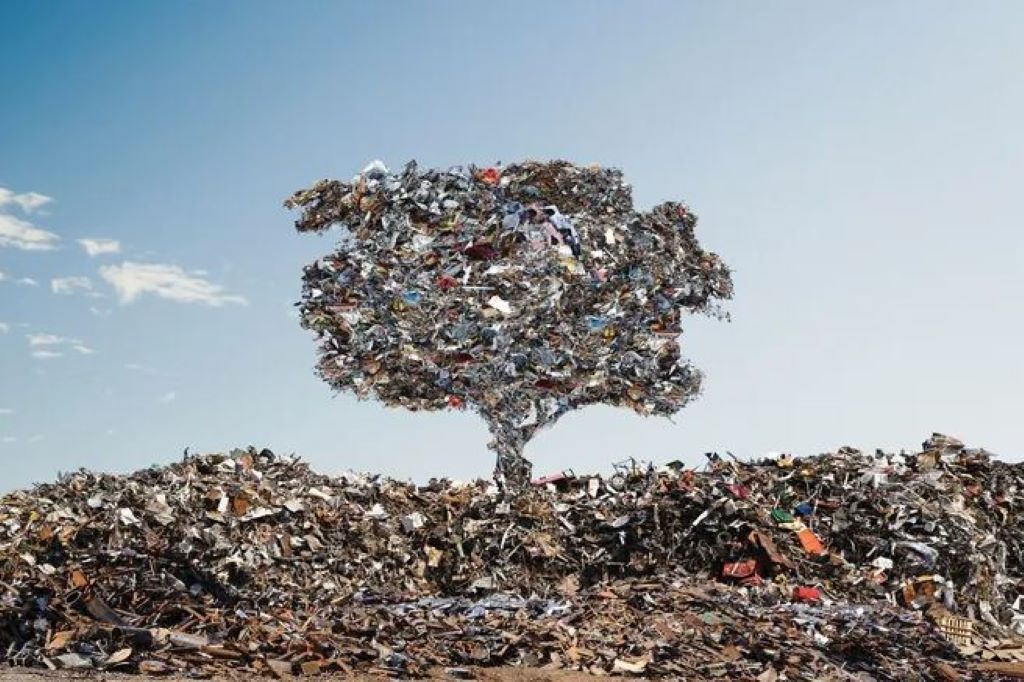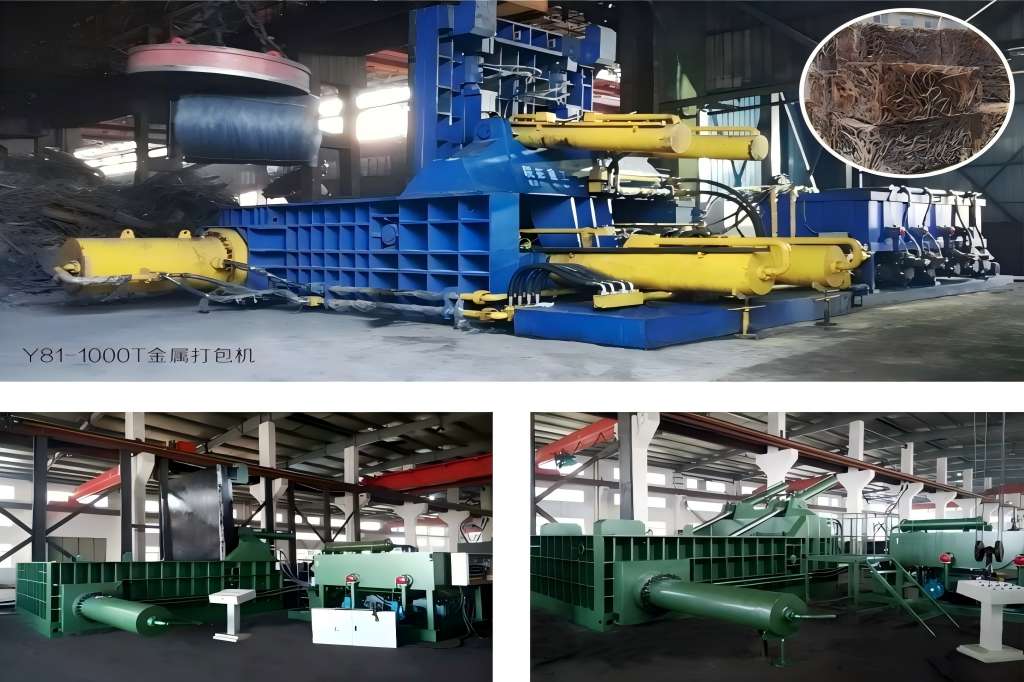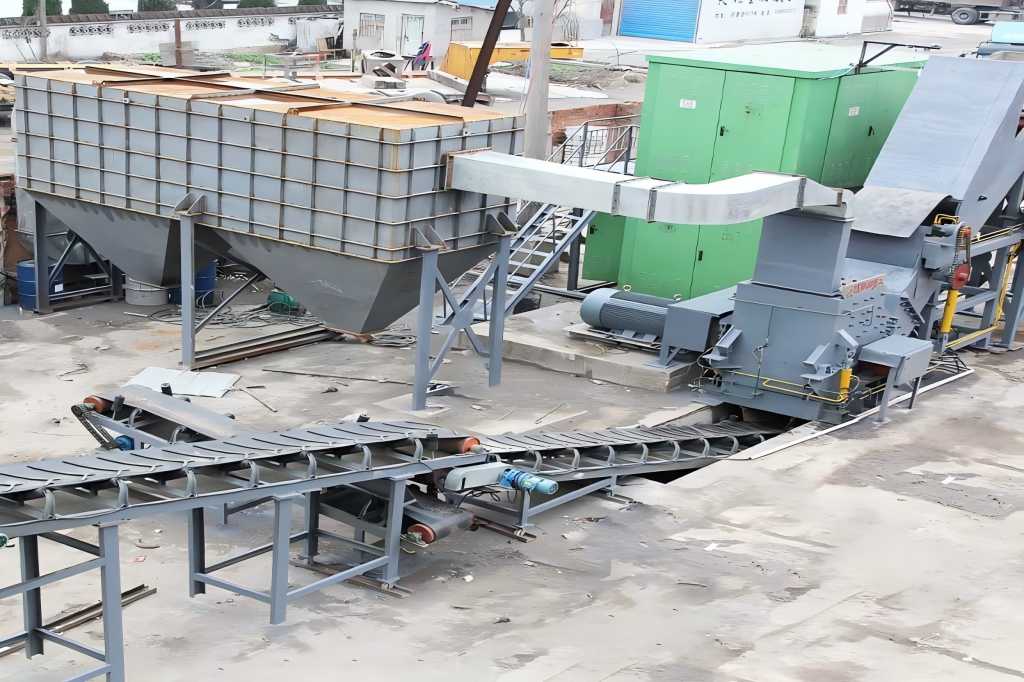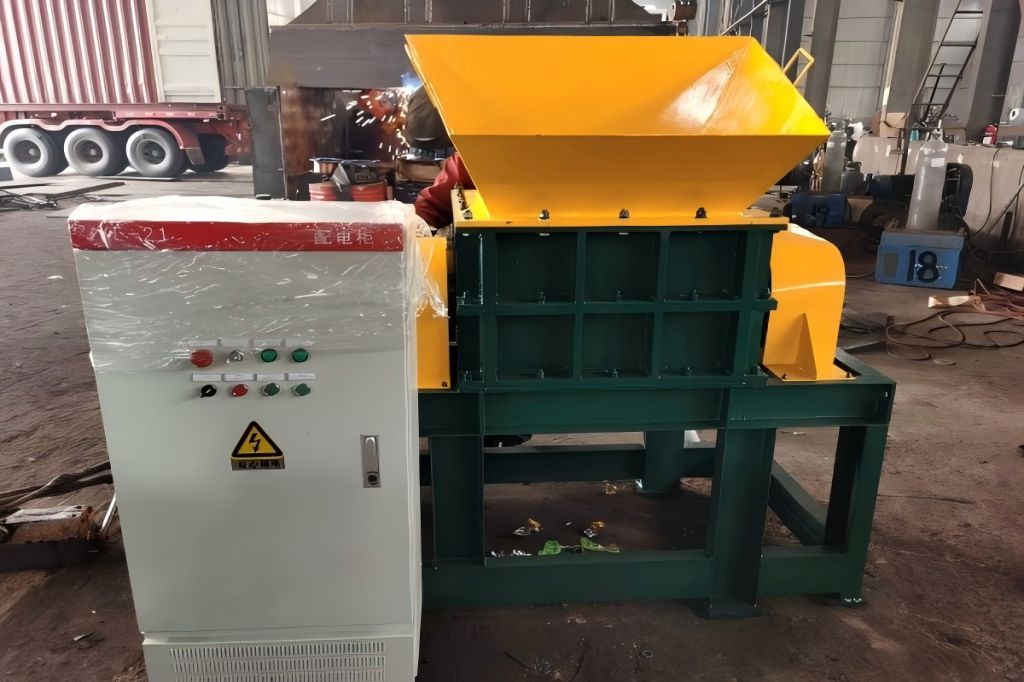Reduced environmental effects, resource conservation, and economic efficiency are all made possible via recycling scrap metal. The process not only aids in waste management but also provides raw materials for new products, reducing the need for mining and processing virgin materials.
Central to the efficiency of this process are various specialized machines, including metal balers, hydraulic metal shear machines, metal chip briquette machines, and scrap grabs. This article explores the scrap metal recycling process and the roles of these essential machines.
Scrap Metal Recycling Process

The scrap metal recycling process involves several key stages, from collection to the final delivery of recycled metal. Here’s a detailed look at each step:
- Collection: This is the first step where scrap metal is gathered from various sources, including industrial sites, construction debris, and discarded consumer products. Different types of metals are collected, such as aluminum, steel, copper, and brass.
- Sorting: Once collected, the metals are sorted into different categories. The sorted components’ purity directly impacts the recovered result’s quality, making it crucial. Sorting can be done manually or with the help of advanced sorting technologies like magnetic separation and sensor-based sorting systems.
- Cleaning: After sorting, the scrap metal is cleaned to remove any impurities, such as dirt, non-metallic items, or other types of debris that may be attached to the metal pieces.
- Processing: Post cleaning, the metal is ready for processing. This stage involves various machines that prepare the scrap for melting.
Key Machinery in Scrap Metal Processing
The scrap metal recycling industry relies heavily on specialized machinery to efficiently process and recycle various types of metal waste.
From initial waste handling and sorting to the final purification and solidification stages, each machine plays a key role in optimizing the recycling process, increasing productivity and minimizing environmental impact
Metal Baler
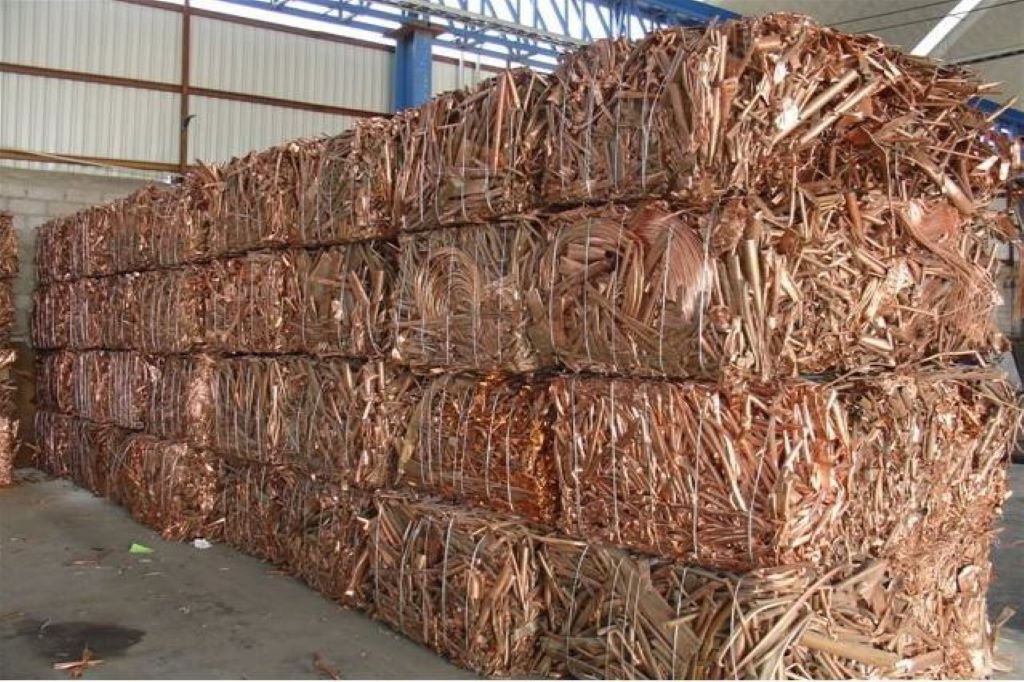
A metal baler is a robust machine designed to compress metal scrap into compact bales, increasing the density of the scrap. This makes transportation and storage more efficient and cost-effective. Metal balers can handle a wide range of metals and are essential in managing large volumes of scrap metal efficiently.
Hydraulic Metal Shear machine
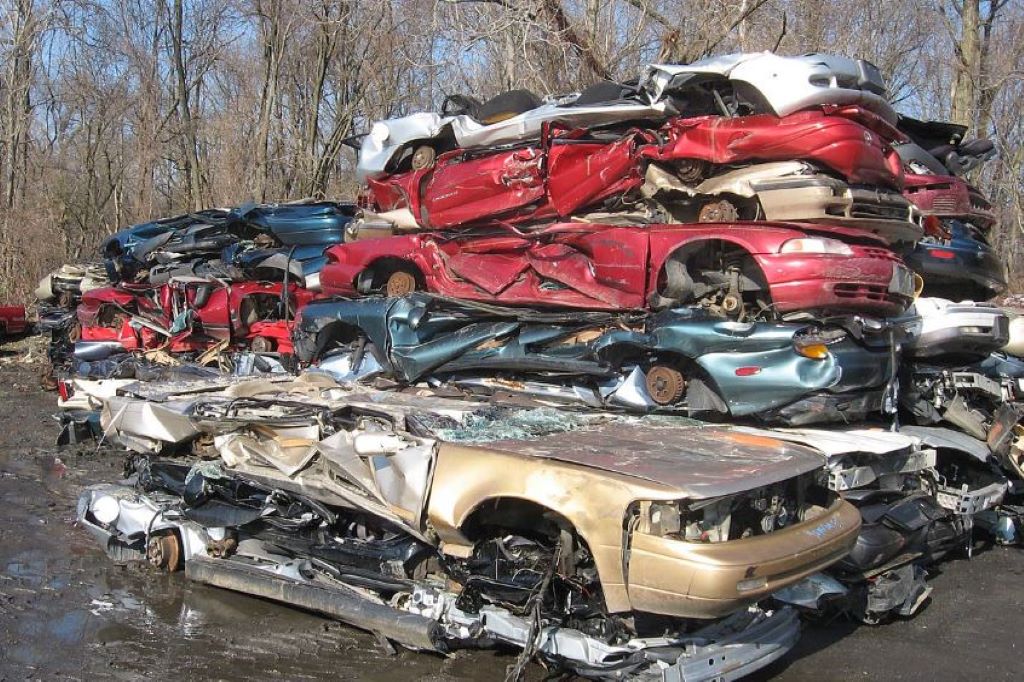
Hydraulic metal shearers are used for cutting large pieces of metal into smaller sizes that are easier to handle and process. These machines use high-force hydraulics to cut through metal, much like a giant pair of scissors. This capability is particularly useful for dismantling large structures or vehicles.
Metal Chip Briquetting Machine
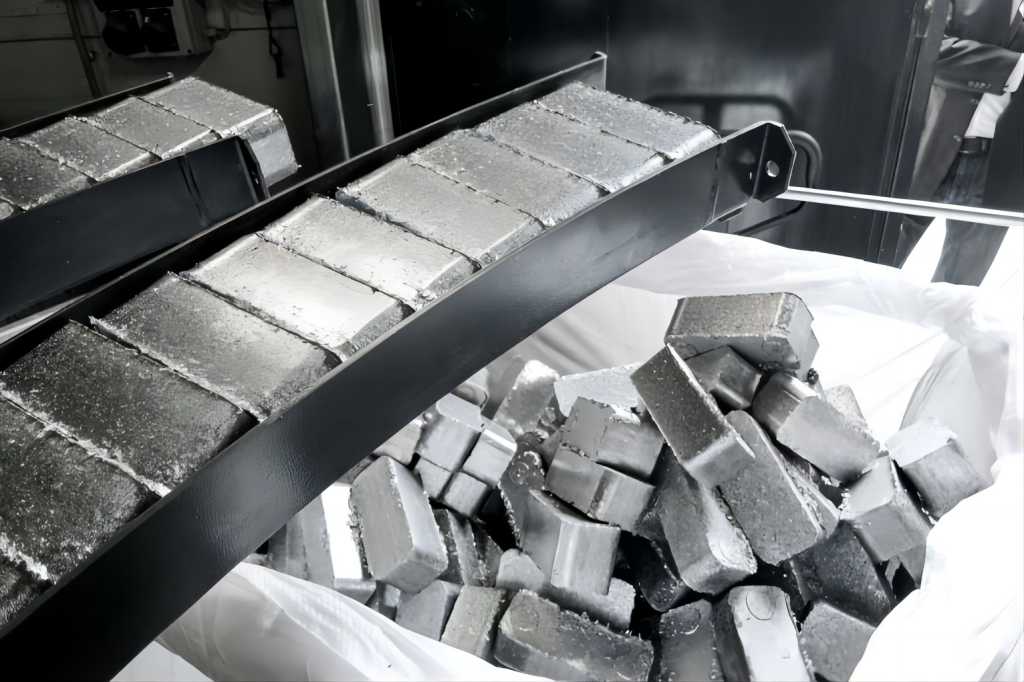
Metal chip briquetting machines are used to turn metal chips from manufacturing processes into solid briquettes. This lessens the amount of garbage, which facilitates handling and recycling. Briquetting also helps in recovering more coolant and reducing the burning of metal chips, thereby saving resources and reducing pollution.
Scrap Grab
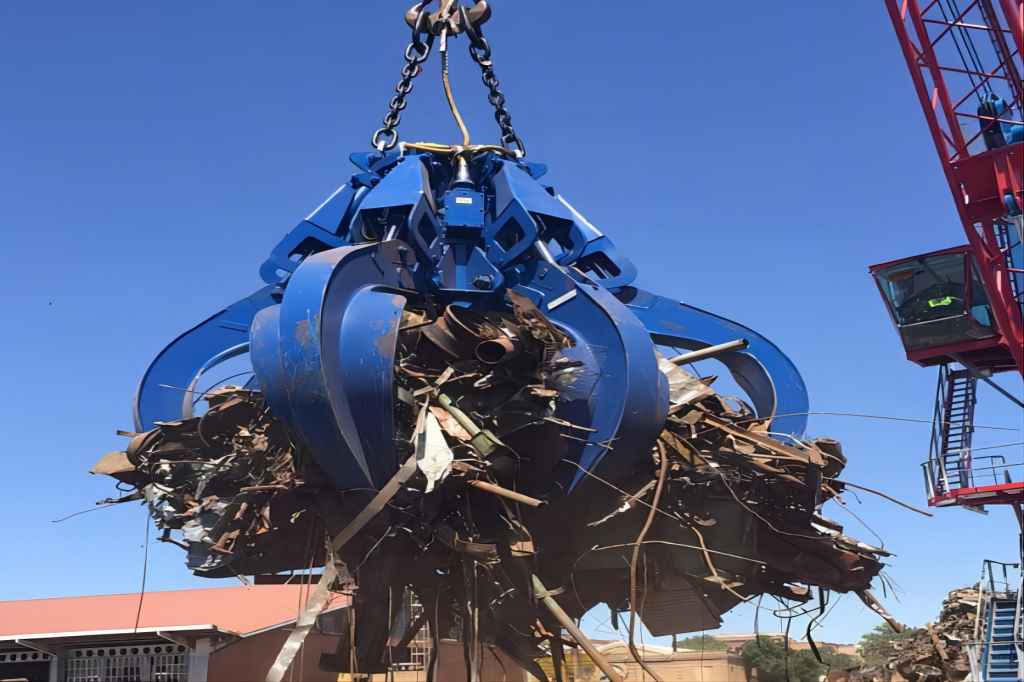
Scrap grabs are critical in the handling and transportation of scrap metal within a recycling facility. These are usually attached to cranes or excavators and are used to pick up and move large amounts of scrap metal. Their design allows for a secure grip on the metal, which is essential for efficient workflow in large recycling operations.
Melting

The scrap metal is transported to a furnace after processing, where it is melted at a high temperature. The melting process is designed to purify the metal further, removing any remaining impurities.
Purification
It may be necessary to use extra purification procedures to guarantee the recycled metal’s best grade. Techniques such as electrolysis or the use of chemical agents can remove any residual contaminants
Solidification
The molten metal is formed into ingots, bars, or sheets after it has been refined. The recycling cycle is therefore complete because these forms are now prepared for use in the production of new goods.
Conclusion
The recycling of scrap metal is an essential component of resource management and sustainability. The machinery involved, such as metal balers, hydraulic metal shearers, metal chip briquette machines, and scrap grabs, are integral to the efficiency and effectiveness of this process.
By understanding and improving these technologies, the recycling industry can continue to reduce the environmental impact of metal waste, promoting a more sustainable future.

